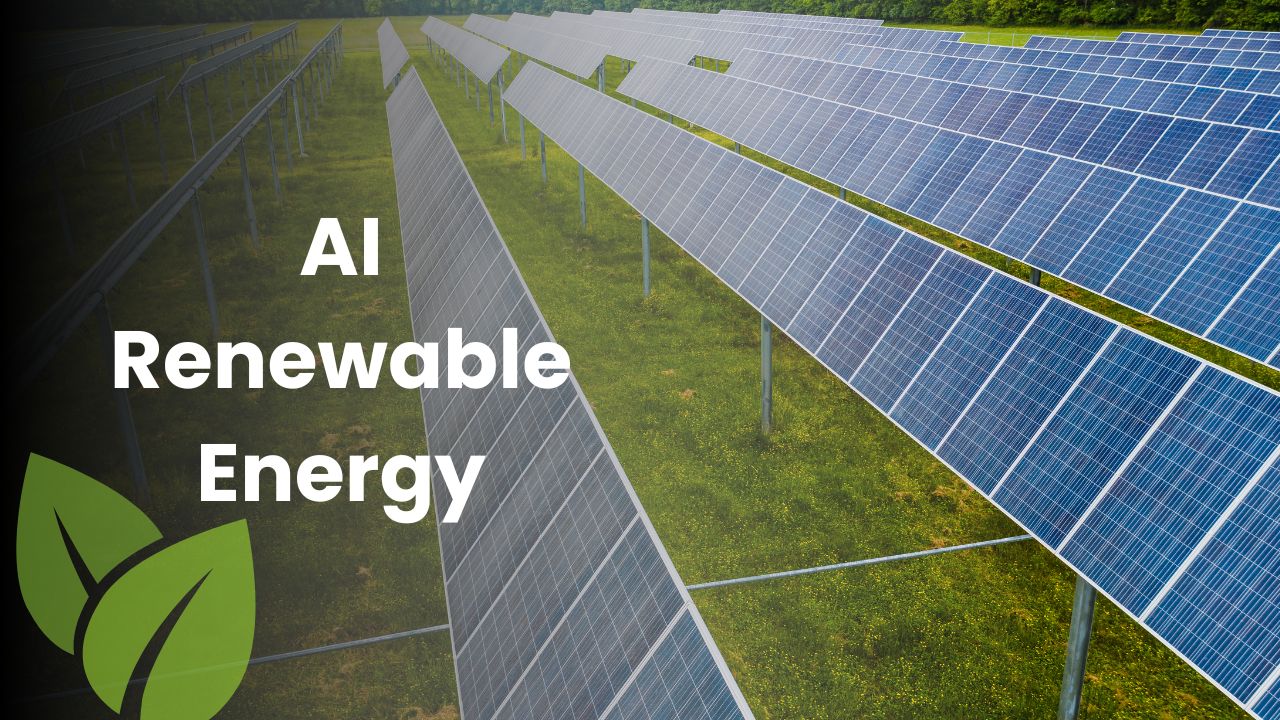The Role of AI in Optimizing Renewable Energy in Cambodia

Cambodia is rapidly embracing renewable energy as part of its commitment to sustainability. With an increasing demand for electricity and a strong push toward green energy sources such as solar and hydroelectric power, the country is at a turning point in its energy transition. However, challenges such as grid stability, energy storage, and fluctuating supply remain significant hurdles.
Artificial intelligence (AI) is emerging as a powerful tool to optimize renewable energy solutions. From smart grids to predictive maintenance and energy forecasting, AI-driven innovations are reshaping Cambodia’s energy landscape. This article explores the role of AI in enhancing renewable energy efficiency, its impact on the smart grid infrastructure, and the future of AI-powered green technology in Cambodia.
The Growing Renewable Energy Sector in Cambodia
Cambodia’s energy sector has seen a remarkable shift toward renewables in recent years. The government has set ambitious targets to increase the share of renewable energy, aiming to reduce reliance on fossil fuels. Key developments include:
- Solar Power Expansion: Large-scale solar farms, such as the National Solar Park project, have contributed significantly to the energy mix.
- Hydropower Dominance: Cambodia’s hydropower plants provide a substantial portion of the country’s electricity.
- Government Policies and Incentives: Renewable energy policies, including tax incentives and private investment encouragement, have fueled growth in the sector.
Despite these advances, challenges such as inconsistent energy supply and limited grid infrastructure continue to hinder the full potential of renewable energy. This is where AI comes into play.
The Role of AI in Enhancing Energy Efficiency
AI has the potential to optimize energy generation, distribution, and consumption in Cambodia. Here’s how AI contributes to improving efficiency:
- Predictive Energy Demand Analysis: AI algorithms analyze historical energy usage data and predict demand fluctuations, allowing for better energy distribution.
- Optimization of Renewable Energy Output: Machine learning models enhance the efficiency of solar panels and wind turbines by adjusting settings based on weather patterns.
- Energy Storage Management: AI optimizes battery storage by ensuring that excess energy is stored efficiently and used when demand is high.
By implementing AI-driven solutions, Cambodia can minimize energy waste and ensure a steady power supply from renewable sources.
Smart Grids and AI-Powered Energy Management
A smart grid is an advanced electrical grid that integrates AI and automation to improve energy efficiency and reliability. Smart grids are particularly useful for renewable energy integration, as they provide real-time insights into power generation and consumption. Key benefits of AI-powered smart grids include:
- Automated Load Balancing: AI systems adjust electricity distribution to match supply with demand, preventing power shortages or wastage.
- Fault Detection and Prevention: AI-powered monitoring systems detect anomalies in the grid and predict failures before they occur.
- Real-time Data Processing: Smart grids process large volumes of data to optimize energy usage dynamically.
Countries like Singapore and Germany have successfully implemented AI-driven smart grids, and Cambodia has the opportunity to adopt similar strategies to enhance its energy infrastructure.
AI in Solar and Wind Energy Optimization
Solar and wind energy are crucial to Cambodia’s renewable energy strategy. AI-driven technologies are revolutionizing the way these resources are harnessed:
- Solar Panel Efficiency Enhancement: AI models analyze solar panel performance and adjust angles or cleaning schedules to maximize energy absorption.
- Wind Energy Prediction Models: Machine learning algorithms forecast wind patterns to optimize turbine operations and prevent downtime.
- Grid Stability Through AI: AI continuously monitors grid performance, ensuring that variable renewable sources do not disrupt energy stability.
These advancements make renewable energy more reliable and cost-effective, encouraging further investment in Cambodia’s green energy sector.
Challenges and Future Prospects of AI in Cambodia’s Energy Sector
Despite its potential, integrating AI into Cambodia’s renewable energy infrastructure presents several challenges:
- Infrastructure Limitations: Cambodia’s existing grid infrastructure needs significant upgrades to accommodate AI-driven solutions.
- High Implementation Costs: AI technology requires investment in hardware, software, and skilled professionals.
- Lack of AI Expertise: The country needs a workforce skilled in AI and renewable energy technologies to implement and maintain AI-powered systems effectively.
However, with increased government support, international collaboration, and private sector investments, Cambodia can overcome these challenges and accelerate AI adoption in renewable energy.
Conclusion
AI is set to revolutionize Cambodia’s renewable energy sector by optimizing efficiency, stabilizing the grid, and ensuring sustainable energy distribution. With the right policies and investments, AI-powered smart grids and predictive analytics can pave the way for a greener future.
To fully leverage AI in renewable energy, stakeholders—including the government, tech innovators, and energy companies—must collaborate to build a strong infrastructure and workforce. The future of Cambodia’s energy lies in embracing AI-driven solutions, making sustainability both achievable and cost-effective.
Call to Action
Are you interested in the future of green technology in Cambodia? Stay updated with the latest trends in AI and renewable energy by following our blog! Let’s work together to build a smarter, more sustainable future. 🌱⚡



